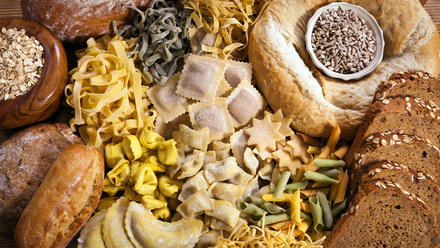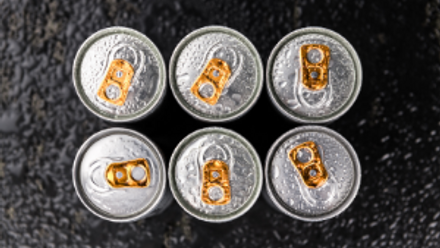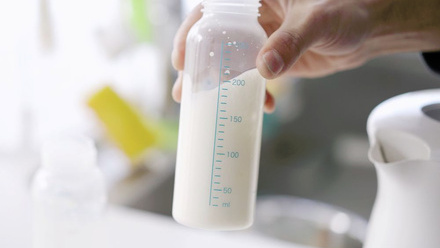As a parent, managing your child's health can feel like an endless journey of questions and concerns. One of the more complex challenges you may encounter is Mast Cell Activation Syndrome (MCAS). If you're not sure what MCAS is or how it affects your child, you're not alone.
In this guide, Specialist Dietitian for Children & Parents Nishti Udeh breaks it down in simple terms and offers practical steps to help you manage symptoms and improve your child's quality of life.
What is MCAS?
MCAS happens when mast cells - your child’s body’s “security guards” - become overly sensitive and release too many chemicals in response to everyday triggers. One of these chemicals is histamine, which normally helps the body respond to things like allergens or infections.
But when there’s too much histamine, it can cause symptoms like itching, swelling, tummy pain, fatigue, or a runny nose. Mast cells also release other substances that can affect the skin, gut, lungs, and even the brain. Because mast cells are found throughout the body, MCAS can cause a wide range of symptoms across many different systems.
MCAS vs food allergies: What’s the difference?
Food allergies and MCAS can look very similar, but they’re quite different once you dig a little deeper.
- A food allergy is a clear immune reaction to something specific, like milk, egg, or peanuts. These reactions are usually immediate, predictable, and repeatable. You’ll often see the same symptoms every time the food is eaten - hives, vomiting, swelling, or even anaphylaxis.
- MCAS, on the other hand, is caused by mast cells that misfire. These cells release chemicals like histamine too easily, not just in response to food, but also to things like stress, heat, or strong smells.
The symptoms can mimic allergies - rashes, tummy issues, or breathlessness - but they’re far less predictable. A food might cause a reaction one day and not the next.
Because MCAS shares symptoms with food allergies, IBS, eczema, and even anxiety, it’s often misunderstood or missed altogether.
Tip: If your child reacts inconsistently to certain foods, or symptoms come and go without a clear pattern, it might be more than just a food allergy. MCAS could be worth exploring.
Signs and symptoms of MCAS in children
MCAS symptoms can vary, but common signs to watch for include:
Skin and allergy-like symptoms
- Flushing, hives, or swelling
- Itchy skin or unexplained rashes
Digestive issues
- Abdominal pain, nausea, bloating
- Diarrhoea or constipation
- Reflux or difficulty swallowing
Respiratory symptoms
- Wheezing or shortness of breath
- Chronic sneezing or runny nose
Neurological and behavioural changes
- Brain fog, trouble concentrating
- Fatigue, dizziness
- Mood swings, irritability, or anxiety
Severe reactions
- Anaphylaxis (in rare cases)
Why is MCAS hard to diagnose?
Diagnosing MCAS can be tricky, as its symptoms overlap with many other conditions and can fluctuate. Your child may seem fine for a while, only to suddenly experience a flare-up. This can be frustrating, especially when healthcare professionals dismiss or misdiagnose symptoms.
Doctors typically rely on:
- Symptoms affecting multiple body systems (e.g., skin rashes, stomach pain, wheezing)
- Lab tests showing mast cell activity (e.g., tryptase levels, though other markers may be helpful)
- A positive response to treatment with mast cell-targeting medications
A normal tryptase level doesn't rule out MCAS, and doctors will also rule out other conditions (e.g., IBS, autoimmune disorders, or infections) to ensure an accurate diagnosis.
The bucket analogy: Understanding triggers
Picture your child’s body as a bucket. Each time they are exposed to a trigger - whether it’s certain foods, environmental factors, or stress - the bucket fills up. When the bucket overflows, symptoms occur.
This analogy is key to understanding how MCAS works. The triggers can be cumulative, so one small trigger might not cause an issue on its own, but if the bucket is already halfway full, even a small additional trigger could cause a big reaction. Reducing triggers helps keep the bucket empty and symptoms under control.
Understanding and managing MCAS triggers: Practical tips for parents
1. Food triggers
Some foods are high in histamine or trigger its release. Watch out for:
- Processed meats (salami, hot dogs)
- Shellfish
- Canned or smoked fish
- Spinach, tomatoes, aubergine
- Aged cheeses and fermented foods
General tips:
- Consider reducing or avoiding high-histamine foods
- Freeze leftovers quickly to reduce histamine build-up
- Choose minimally processed foods over ultra-processed options
- Keep a food diary to track what your child eats and their reactions. A dietitian specialising in MCAS can help design a trigger-free meal plan
2. Environmental triggers
Environmental factors can also trigger MCAS symptoms, such as:
- Pollen
- Mold
- Dust and pet dander
- Strong fragrances (perfumes, cleaning products, smoke)
Pro Tip: Use an air purifier, choose hypoallergenic bedding, and opt for non-toxic cleaning products.
3. Electronics
While research is still limited, some studies suggest a connection between electronics and MCAS. Too much screen time can cause issues like sore muscles, eye strain, and mental health struggles, potentially worsening symptoms.
Pro Tip: Limit screen time and monitor your child's reactions to electronics.
4. Temperature sensitivity
Sudden temperature changes can trigger MCAS flare-ups.
Pro Tip: Dress your child in layers so they can easily adjust when moving between indoors and outdoors.
5. Mental and emotional stress
Emotional stress can also trigger MCAS symptoms. Anxiety, excitement, and fear can activate mast cells, worsening symptoms like stomach pain, brain fog, and fatigue.
Breaking the stress-symptom cycle with conscious parenting
Conscious parenting emphasises being present and aware of your child's emotional and physical needs. It encourages parents to approach challenges with empathy, patience, and understanding, reducing unnecessary emotional triggers.
When you stay calm and attentive, your child feels safer and more understoodthis emotional stability can reduce stress-induced flare-ups.
Pro Tip: Supporting emotional regulation helps your child feel secure and reduces anxiety-driven MCAS symptoms.
Is your child’s MCAS stuck in ‘danger mode’?
Shifting the body from defence to peace mode
Many children with MCAS continue to experience symptoms like rashes, stomach pain, fatigue, and food sensitivities - even after avoiding known triggers. One reason could be that their body is stuck in a state called the Cell Danger Response (CDR).
The CDR is a protective mechanism where cells send out distress signals when under stress, infection, or injury. These signals activate mast cells and keep the immune system on high alert.
This results in:
- Inflammation
- Oxidative stress
- Changes in how cells manage energy and calcium
So, while it may seem like your child is reacting "for no reason," their cells might still believe they're under threat.
Understanding this highlights the need for a holistic approach - addressing emotional stressors and environmental factors to help your child shift out of “danger mode.”
Taking a holistic approach to managing MCAS
Managing MCAS goes beyond avoiding triggers. It's about supporting your child's body holistically - addressing physical, emotional, mental, and environmental factors. This comprehensive approach can make a big difference in reducing symptoms and improving your child's overall quality of life.
By understanding MCAS and its triggers, and incorporating conscious parenting strategies, you can better manage your child's symptoms. Seek support from healthcare professionals and work with a dietitian to create a tailored plan for your child's specific needs.
Want to explore whether your child might have MCAS or histamine intolerance? Book a free 20-minute clarity call with Nishti.
References
Afrin LB, Weinstock LB, Molderings GJ. (2020). Diagnosis of mast cell activation syndrome: a global “consensus-2.” Expert Review of Clinical Immunology, 16(11), 813–829. https://doi.org/10.1080/1744666X.2021.1840441
Anogeianaki A, Castellani ML, Tripodi D, et al. (2010). Vitamins and mast cells. International Journal of Immunopathology and Pharmacology, 23(4), 991-996. https://doi.org/10.1177/039463201002300403
Arun S, Storan A, Myers B. (2022). Mast cell activation syndrome and the link with long COVID. British Journal of Hospital Medicine, 83(7), 1-10. https://doi.org/10.12968/hmed.2022.0123
Chatterjea D, Martinov T. (2015). Mast cells: versatile gatekeepers of pain and inflammation. Current Opinion in Immunology, 36, 94–99. https://doi.org/10.1016/j.coi.2015.07.009
Dear Doctor, Could your patient’s unexplained gastrointestinal symptoms be caused by Mast Cell Activation Syndrome? Ruth Slater and Helen Bowes. Mast Cell Action, UK. (2021). [Accessed February 2025]. https://www.mastcellaction.org/assets/_/2021/06/24/333474aa-8142-404a-9aaa-725592ade66d/mca-bsg-campus-2020-poster-final.pdf
Dong H, Zhang X, Qian Y. (2014). Mast cells and neuroinflammation. Medical Science Monitor Basic Research, 20, 200-206. https://doi.org/10.12659/MSMBR.893093
Folkerts J, Stadhouders R, Redegeld FA, et al. (2018). Effect of Dietary Fiber and Metabolites on Mast Cell Activation and Mast Cell-Associated Diseases. Frontiers in Immunology, 9, 1067. https://doi.org/10.3389/fimmu.2018.01067
Giannetti A, Filice E, Caffarelli C, et al. (2021). Mast Cell Activation Disorders. Medicina (Kaunas), 57(2), 124. https://doi.org/10.3390/medicina57020124
Jennings SV, Slee VM, Zack RM, et al. (2018). Patient Perceptions in Mast Cell Disorders. Immunology and Allergy Clinics of North America, 38(3), 505-525. https://doi.org/10.1016/j.iac.2018.04.006
Jennings S, et al. (2014). The Mastocytosis Society Survey on Mast Cell Disorders: Patient Experiences and Perceptions. Journal of Allergy and Clinical Immunology: In Practice, 2(1), 70-76. https://doi.org/10.1016/j.jaip.2013.11.006
Johansson O. (2009). Disturbance of the immune system by electromagnetic fields. Pathophysiology, 16(2-3), 157–177. https://doi.org/10.1016/j.pathophys.2009.03.004
Liu ZQ, Li XX, Qiu SQ, et al. (2017). Vitamin D contributes to mast cell stabilization. Allergy, 72(8), 1184-1192. https://doi.org/10.1111/all.13110
Molderings GJ, Brettner S, Homann J, Afrin LB. (2011). Mast Cell Activation Disease: A Concise Practical Guide for Diagnostic Workup and Therapeutic Options. Journal of Hematology & Oncology, 4, 10. https://doi.org/10.1186/1756-8722-4-10
Naviaux RK. (2014). Metabolic features of the cell danger response. Mitochondrion, 16, 7–17. https://doi.org/10.1016/j.mito.2013.08.006
Rogers CJ, Hart R. (2021). Home and the extended-self: Exploring associations between clutter and wellbeing. Journal of Environmental Psychology, 73, Article 101553. https://doi.org/10.1016/j.jenvp.2020.101553
Saxbe DE, Repetti R. (2010). No place like home: home tours correlate with daily patterns of mood and cortisol. Personality and Social Psychology Bulletin, 36(1), 71–81. https://doi.org/10.1177/0146167209352864
Shorey S, Ng ED. (2021). The efficacy of mindful parenting interventions: A systematic review and meta-analysis. International Journal of Nursing Studies, 121, 103996. https://doi.org/10.1016/j.ijnurstu.2021.103996
Solomon BD, Khatri P. (2025). Clustering of clinical symptoms using large language models reveals low diagnostic specificity of proposed alternatives to consensus mast cell activation syndrome criteria. Journal of Allergy and Clinical Immunology, 155(1), 213-218.e4. https://doi.org/10.1016/j.jaci.2024.09.006
Spaulding HR, Yan Z. (2022). AMPK and the Adaptation to Exercise. Annual Review of Physiology, 84, 209-227. https://doi.org/10.1146/annurev-physiol-060721-095517
Theoharides TC, et al. (2012). Mast cells and inflammation. Biochimica et Biophysica Acta (BBA) - Molecular Basis of Disease, 1822(1), 21–33. https://doi.org/10.1016/j.bbadis.2010.12.014
Valent P, Akin C, Nedoszytko B, et al. (2020). Diagnosis, Classification and Management of Mast Cell Activation Syndromes (MCAS) in the Era of Personalized Medicine. International Journal of Molecular Sciences, 21(23), 9030. https://doi.org/10.3390/ijms21239030
Weinstock LB, Nelson RM, Blitshteyn S. (2023). Neuropsychiatric Manifestations of Mast Cell Activation Syndrome and Response to Mast-Cell-Directed Treatment: A Case Series. Journal of Personalized Medicine, 13(11), 1562. https://doi.org/10.3390/jpm13111562
Wirz S, Hertfelder HJ, Seidel H, et al. (2017). Lower prevalence of vitamin D insufficiency in German patients with systemic mast cell activation syndrome compared with the general population. Zeitschrift für Gastroenterologie, 55(12), 1297-1306. https://doi.org/10.1055/s-0043-121346
Online sources
Mast Cell Action. (2021). Dear Doctor [Poster]. https://www.mastcellaction.org/assets/_/2021/06/24/333474aa-8142-404a-9aaa-725592ade66d/mca-bsg-campus-2020-poster-final.pdf
NIH. (2010). PMC article on mast cells. https://pmc.ncbi.nlm.nih.gov/articles/PMC2925218/
NIH. (2023). Screen time and health. https://pmc.ncbi.nlm.nih.gov/articles/PMC10338872/
ScienceDirect. (2020). Article on histamine and inflammation. https://www.sciencedirect.com/science/article/pii/S1567724920301380
Wiley Online Library. (2019). Mast cell activity review. https://onlinelibrary.wiley.com/doi/epdf/10.1007/s12079-019-00507-9







